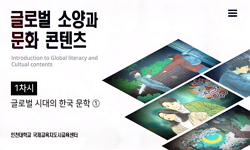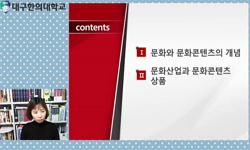본고는 2008년 현재 문예창작학과가 개설되어 있는 전국의 각 대학에서 행해지고 있는 아동문학 관련 교육 내용과 실태를 점검해보고 이에 대한 문제점의 지적과 이에 대한 해결책을 모색해...
http://chineseinput.net/에서 pinyin(병음)방식으로 중국어를 변환할 수 있습니다.
변환된 중국어를 복사하여 사용하시면 됩니다.
- 中文 을 입력하시려면 zhongwen을 입력하시고 space를누르시면됩니다.
- 北京 을 입력하시려면 beijing을 입력하시고 space를 누르시면 됩니다.
https://www.riss.kr/link?id=A99618974
- 저자
- 발행기관
- 학술지명
- 권호사항
-
발행연도
2008
-
작성언어
Korean
- 주제어
-
KDC
810
-
등재정보
KCI등재후보
-
자료형태
학술저널
-
수록면
53-70(18쪽)
- 제공처
-
0
상세조회 -
0
다운로드
부가정보
국문 초록 (Abstract)
문학은 이제까지 시, 서사(소설), 평론이라는 다소 고답적이고 단순했던 개념의 분류에서 벗어나고 있다. 이러한 변화의 물결 속에서 아동문학도 새로운 개념의 정립이 필요하다고 하겠다. 그러나 아동문학은 낡은 이론의 틀에서 조금도 앞으로 나아가지 못하고 있으며, 이에 따라 ‘아동문학’은 단순히 ‘어린이들을 위한 읽을거리’로 폄하되어 본격문학에 편입되지 못하고 특수문학이라는 틀에 얽매여 있다. 그러므로 아동문학이 대학에서 본격적인 문학 교육의 과정 중 하나로 자리 잡기 위해서는 그 이론적 틀을 새롭게 정립할 필요가 있다.
우선 아동문학에 대한 정의로 널리 사용되고 있는 ‘성인인 작가가 아동이나 동심을 가진 아동다운 성인에게 읽히기 위해 쓴 모든 저작’이라는 개념부터 수정, 보완되어야 한다. 문학 작품을 만들어낸 작가의 정체성과 그 대상 독자의 구분으로 해당 문학을 정의하는 것 자체가 시대착오적이며, 아동문학의 본질이 아닌 그 기능에 의지한 개념이기 때문이다. 아동문학의 개념을, 아동문학 작품을 만들어내는 작가의 정체나 작품을 읽는 독자의 대상으로 정의하여서는 안 된다. 작품이 지닌 미학적 특징과 형식의 특징으로 구분하여야 한다.
대학에서의 아동문학 창작 교육이 본격적인 궤도에 오르기 위해서는 아동문학 자체가 인문학의 연구 범위 안에 들어설 수 있도록, 그 이론적 토대를 새로운 시대에 어울리게 만들어야 하는 것이 첫 번째 과제라고 하겠다.
본고는 2008년 현재 문예창작학과가 개설되어 있는 전국의 각 대학에서 행해지고 있는 아동문학 관련 교육 내용과 실태를 점검해보고 이에 대한 문제점의 지적과 이에 대한 해결책을 모색해보는 글이다.
문학은 이제까지 시, 서사(소설), 평론이라는 다소 고답적이고 단순했던 개념의 분류에서 벗어나고 있다. 이러한 변화의 물결 속에서 아동문학도 새로운 개념의 정립이 필요하다고 하겠다. 그러나 아동문학은 낡은 이론의 틀에서 조금도 앞으로 나아가지 못하고 있으며, 이에 따라 ‘아동문학’은 단순히 ‘어린이들을 위한 읽을거리’로 폄하되어 본격문학에 편입되지 못하고 특수문학이라는 틀에 얽매여 있다. 그러므로 아동문학이 대학에서 본격적인 문학 교육의 과정 중 하나로 자리 잡기 위해서는 그 이론적 틀을 새롭게 정립할 필요가 있다.
우선 아동문학에 대한 정의로 널리 사용되고 있는 ‘성인인 작가가 아동이나 동심을 가진 아동다운 성인에게 읽히기 위해 쓴 모든 저작’이라는 개념부터 수정, 보완되어야 한다. 문학 작품을 만들어낸 작가의 정체성과 그 대상 독자의 구분으로 해당 문학을 정의하는 것 자체가 시대착오적이며, 아동문학의 본질이 아닌 그 기능에 의지한 개념이기 때문이다. 아동문학의 개념을, 아동문학 작품을 만들어내는 작가의 정체나 작품을 읽는 독자의 대상으로 정의하여서는 안 된다. 작품이 지닌 미학적 특징과 형식의 특징으로 구분하여야 한다.
대학에서의 아동문학 창작 교육이 본격적인 궤도에 오르기 위해서는 아동문학 자체가 인문학의 연구 범위 안에 들어설 수 있도록, 그 이론적 토대를 새로운 시대에 어울리게 만들어야 하는 것이 첫 번째 과제라고 하겠다.
다국어 초록 (Multilingual Abstract)
Literature has been getting out of the highbrow and simple classifications including poem, narration(novel) and criticism. From the transition wave, juvenile literature needs to establish a new concept. However, juvenile literature has not taken one step further from the old-fashioned theoretical frame and juvenile literature has been lowered into only stories for children and has not been incorporated into the main literature, but into the special literature. Therefore, the establishment of the theoretical frame is needed for juvenile literature to gain a firmer foothold in universities.
First of all, the definition that is widely used requires to revise; all the writings that adult or children writers write to be read by childlike grownups. It is anachronistic to define literature by classifying writers identity and target readers. Also, this definition is based on the function not on the essence. Juvenile literature should not be defined from writers identity or the target readers, but should be based on aesthetic features and forms.
The creative education of juvenile literature should be included in humane studies to go into a main orbit on the basis of theoretical foundation. That is the first task.
This article has researched the reality an the contents related to juvenile literature done in the department literary creation of universities. Also, it has clarified the problems and considered the solution to them. Literature has been getting ou...
This article has researched the reality an the contents related to juvenile literature done in the department literary creation of universities. Also, it has clarified the problems and considered the solution to them.
Literature has been getting out of the highbrow and simple classifications including poem, narration(novel) and criticism. From the transition wave, juvenile literature needs to establish a new concept. However, juvenile literature has not taken one step further from the old-fashioned theoretical frame and juvenile literature has been lowered into only stories for children and has not been incorporated into the main literature, but into the special literature. Therefore, the establishment of the theoretical frame is needed for juvenile literature to gain a firmer foothold in universities.
First of all, the definition that is widely used requires to revise; all the writings that adult or children writers write to be read by childlike grownups. It is anachronistic to define literature by classifying writers identity and target readers. Also, this definition is based on the function not on the essence. Juvenile literature should not be defined from writers identity or the target readers, but should be based on aesthetic features and forms.
The creative education of juvenile literature should be included in humane studies to go into a main orbit on the basis of theoretical foundation. That is the first task.
목차 (Table of Contents)
- 요약
- Ⅰ. 들어가며
- Ⅱ. 아동문학 창작 교육 현황
- Ⅲ. 아동문학 창작 교육에 대한 새로운 인식의 필요성
- Ⅳ. 나가며
- 요약
- Ⅰ. 들어가며
- Ⅱ. 아동문학 창작 교육 현황
- Ⅲ. 아동문학 창작 교육에 대한 새로운 인식의 필요성
- Ⅳ. 나가며
- 참고문헌
- Abstract
동일학술지(권/호) 다른 논문
-
- 한국아동문학학회
- 전명희(Jeon, Myung-Hee)
- 2008
- KCI등재후보
-
- 한국아동문학학회
- 신현득(Sin, Hyeon-Deug)
- 2008
- KCI등재후보
-
- 한국아동문학학회
- 오판진(Oh, Pan-Jin)
- 2008
- KCI등재후보
-
- 한국아동문학학회
- 현은자(Hyun, Eun-Ja)
- 2008
- KCI등재후보





 DBpia
DBpia






